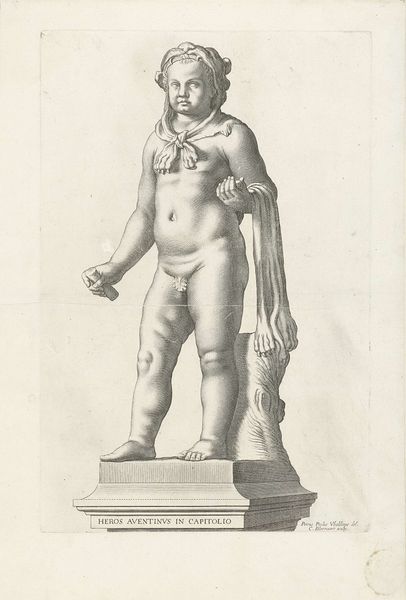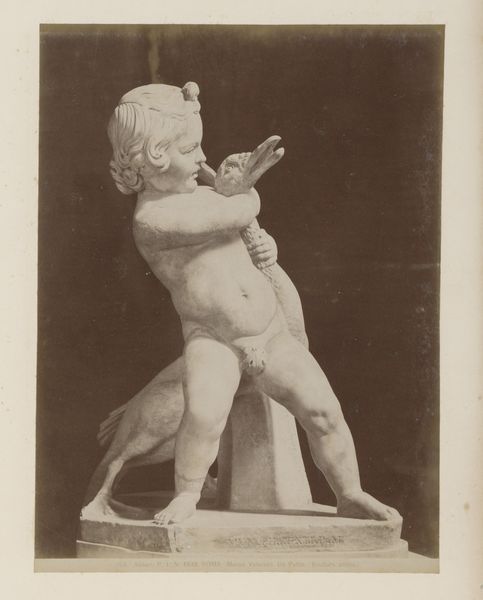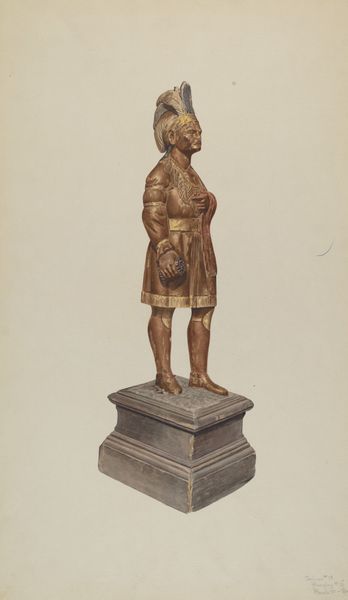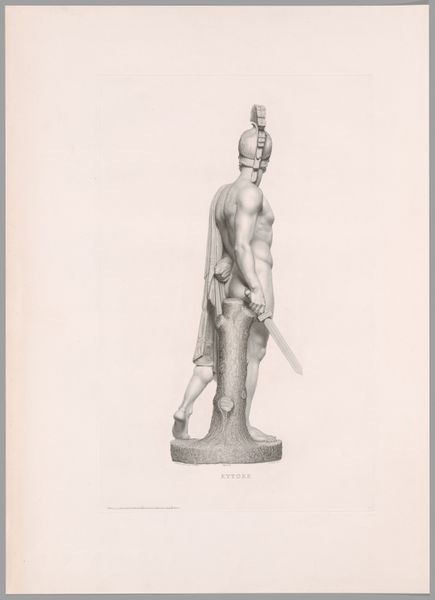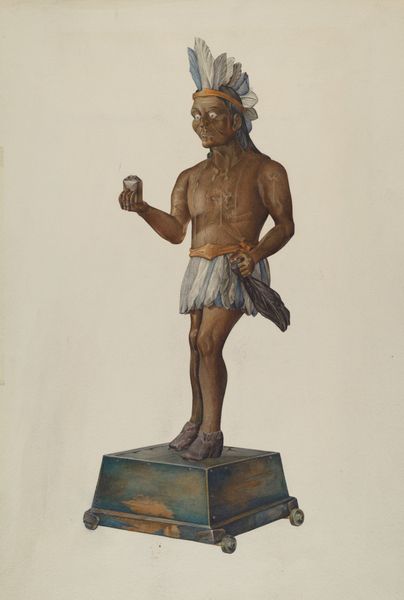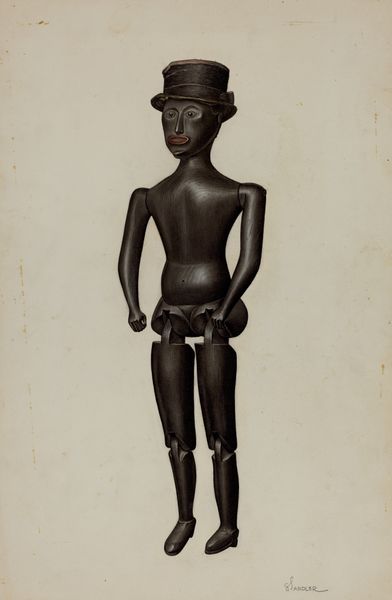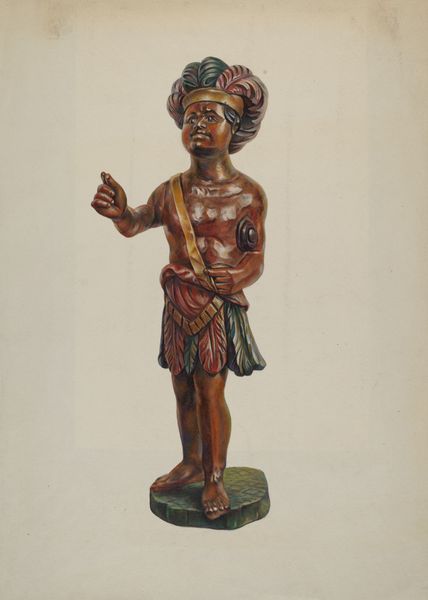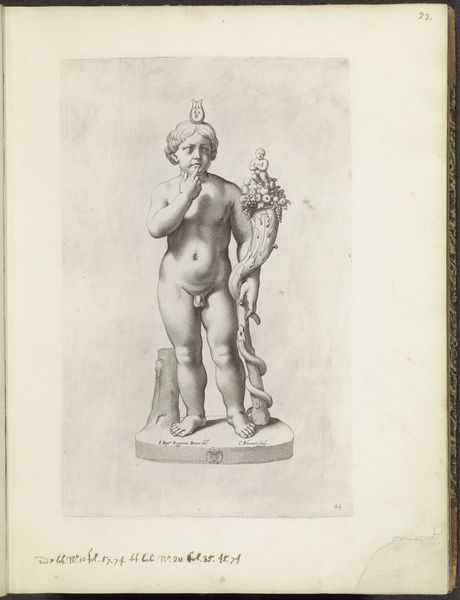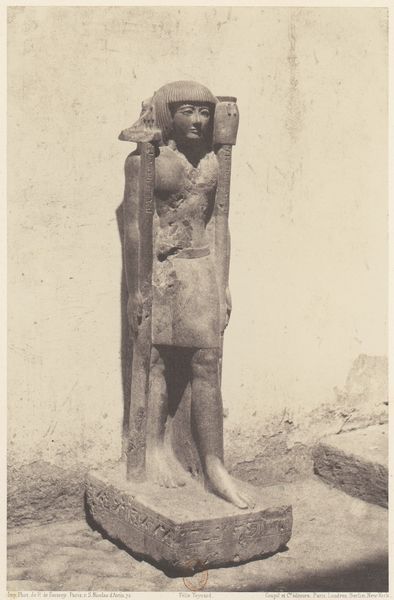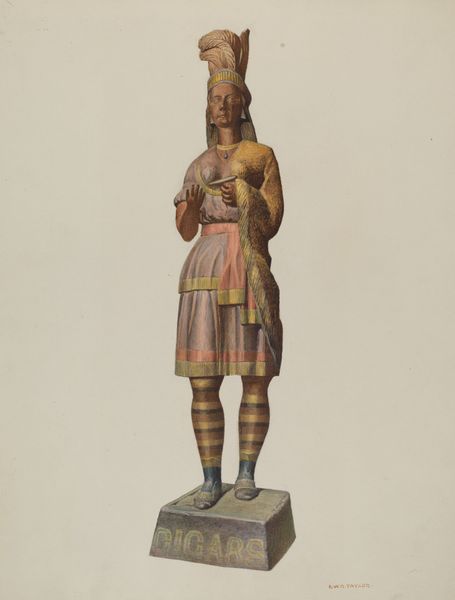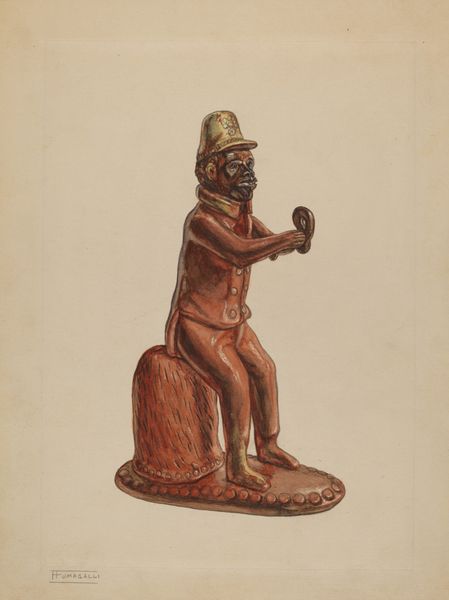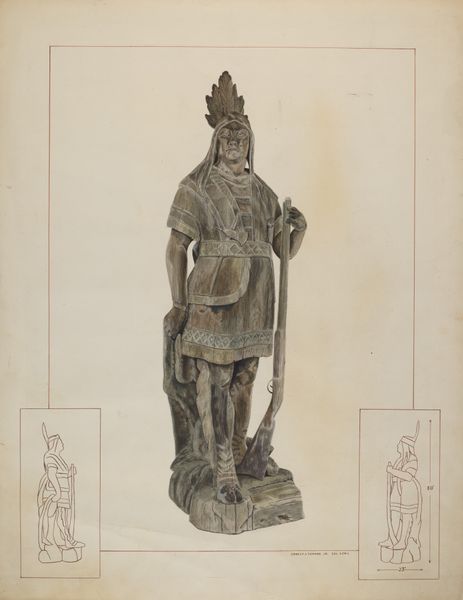
Sculptuur van Hercules als kind in de Capitolijnse Musea te Rome c. 1857 - 1875
0:00
0:00
photography, sculpture
#
portrait
#
greek-and-roman-art
#
photography
#
sculpture
#
history-painting
#
nude
Dimensions: height 257 mm, width 202 mm
Copyright: Rijks Museum: Open Domain
This is a photograph by James Anderson of a sculpture depicting Hercules as a child in the Capitoline Museums, Rome. The infant hero is shown nude, draped with a lion's skin tied at his neck, its claws still gripping the air, symbolizing his future strength and invincibility. This potent image of the lion’s skin resurfaces throughout art history, linking the classical world with later eras, notably in Renaissance depictions. Remember, the skin is not merely an emblem of power; it embodies the very essence of the hero's triumph over the Nemean lion, a beast no weapon could pierce. The act of wearing the skin becomes a symbolic appropriation of the beast's strength. Consider how such imagery resonates through our collective memory. The symbolic weight of Hercules and his lion's skin transcends time, continuously re-emerging and adapting, bearing new meaning in each cultural epoch. It is a testament to the enduring power of symbols to capture the human imagination and convey profound truths about strength, courage, and transformation.
Comments
No comments
Be the first to comment and join the conversation on the ultimate creative platform.
